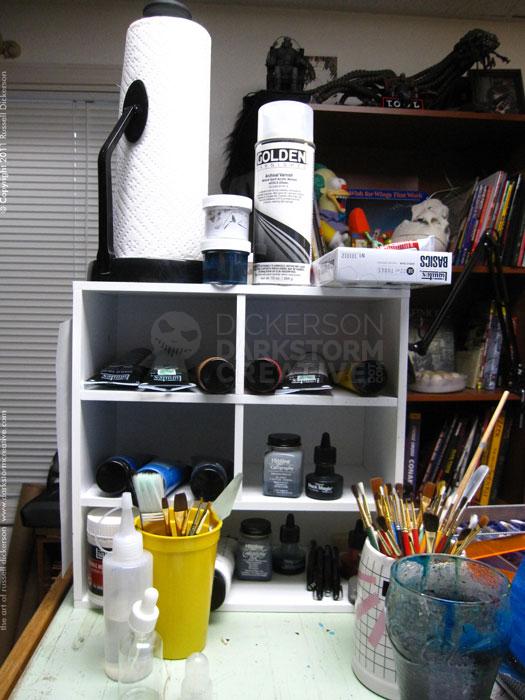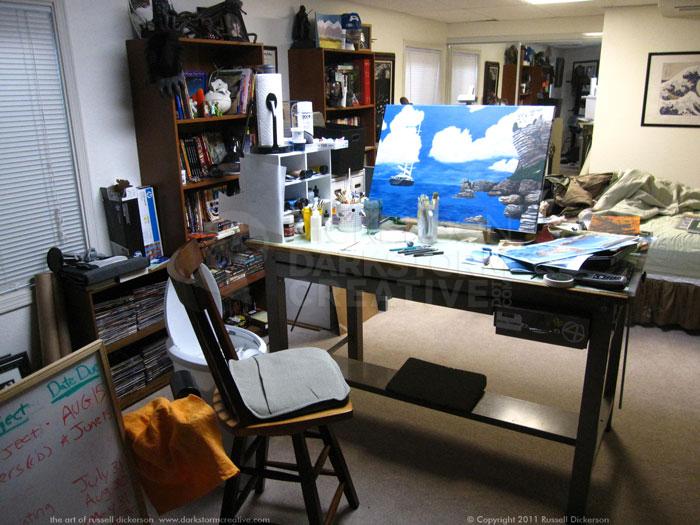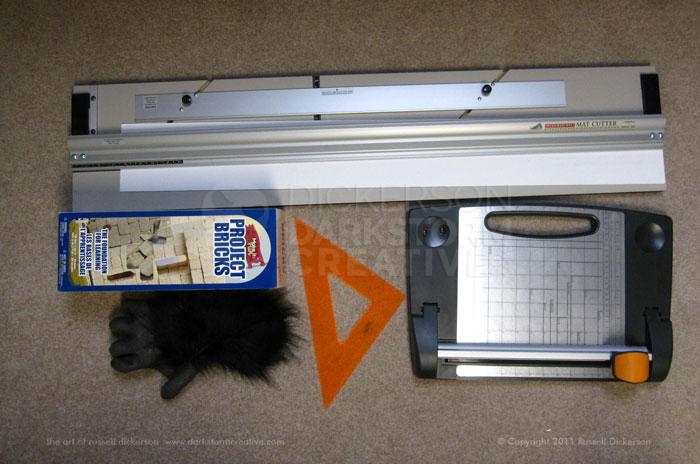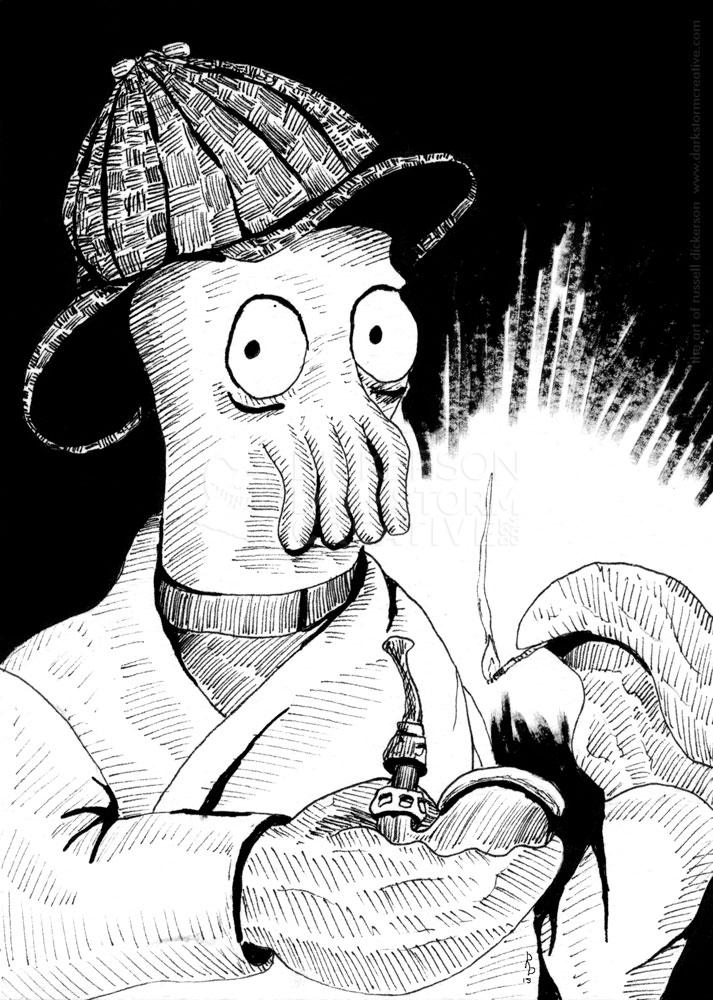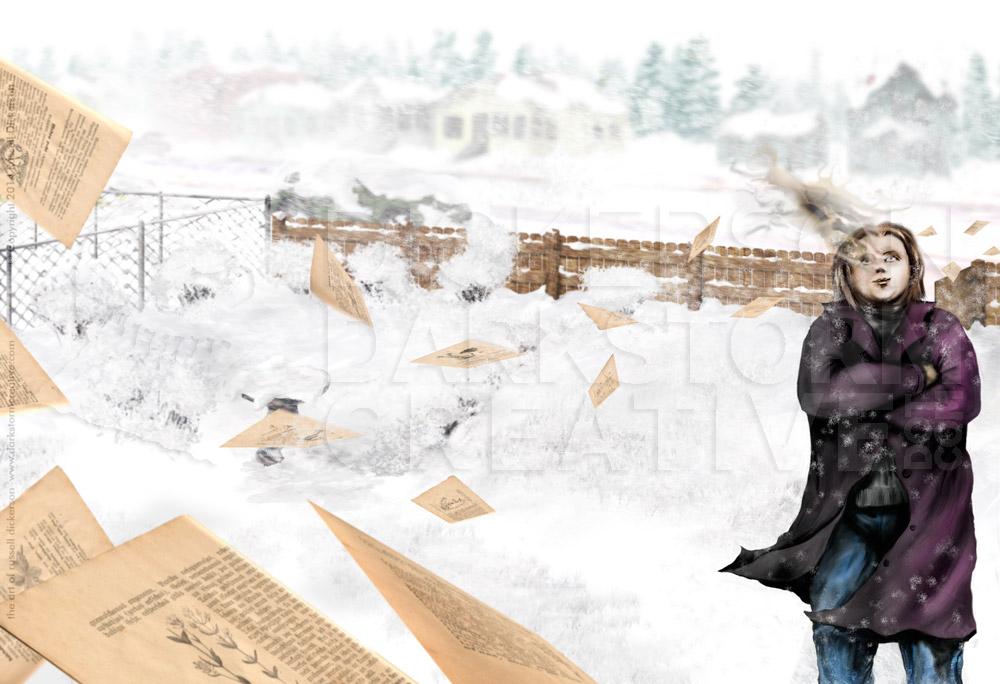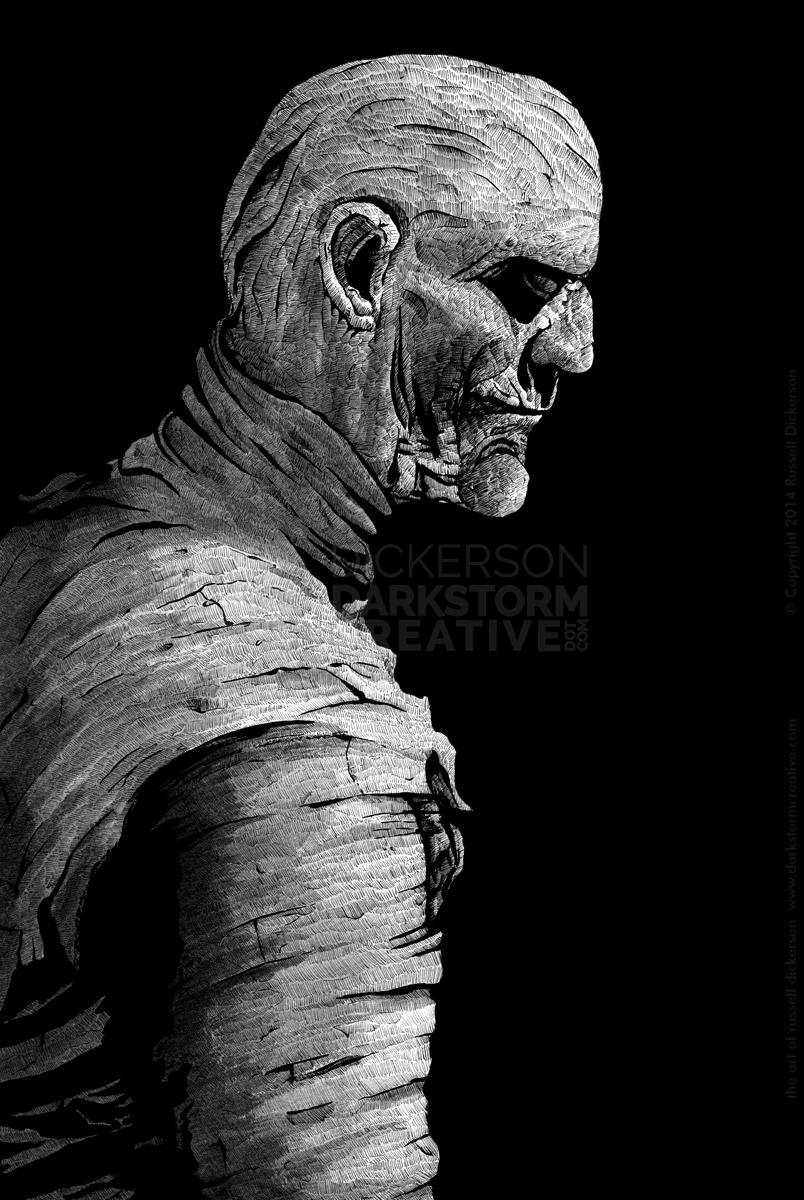In the first part of the article yesterday (here!), I talked about the pens, pencils, and different paper stocks that I use as an artist. Today I’m going to discuss the other things that I do, including acrylic painting, matting, and so on. First off, the easy stuff.
Painting with Acrylics
Now, I’ve only been using acrylics for about a year (save for the time in the late 90’s when I toyed with airbrushing), so there may certainly be better and easier ways to do things. Also, perhaps there are techniques and abilities that I haven’t come across yet, so bear with me. These are just the things that I use for what I do.
This little cubby sits on my art desk (which we’ll look at in a bit), and holds the stuff that I need at hand. Well, the “stuff I need at hand” that isn’t just all over the desk in random locations. There are few generic things here that are still pretty useful, along with the specific paints and such.
First off, of course paper towels are important to have, for lots of reasons. They just sit there on a cheap roll, but one that’s easy enough to pull them off of. They are good for cleanup of course, especially when you’re wiping up paint. But they come in handy for me too, to blot the brush on after I wash it, wipe a little excess paint off the palette knives, and so on.
The old Coca-Cola glass there is my main water supply and cleaning cup. It’s been around longer than either of my children, and when I paint (or do inks even) it’s a nice reminder that this is all a long road, and there are many roads yet to travel. It also regularly reminds me that I need to stop leaving gooey water in there for days at a time.
On the top, and throughout the shelves, you can see the Liquitex Basics acrylic paint that I use. I would imagine there are better paints out there, for different reasons. But for starters, I’m just getting the hang of acrylics, and having yet to sell one (you could be the first! Go here!) I think it’s better to learn the craft at a good price first, then get into the more expensive paints if needed.
On the lower left, you can just make out the Liquitex Flexible Modeling Paste that I used for the texture effects in my painting The Apotheosis of War (you can see it, and closeups, here). I really liked using the paste for that texture, it worked really nicely and was easy to use. I’m looking forward to trying it again soon.
You can also see, on the top shelf and on the desk, some of the small containers that I use. These are just cheap plastic containers from the art store, and they come in really handy when I need to mix paint and save it for a bit. The eye-dropper bottle is good to have, not just for grabbing inks and watery acrylics if needed, but also to use with texture effects. The squeeze bottle of water has really come in handy as well. Not only is it a good source of fresh, clean water to add to inks and acrylics, the spout makes it easy to get just the right amount of water.
Lastly, on the top shelf you can see a can of Golden’s Archival Varnish (gloss), which is a must for paintings. I’ve noticed so many people reach out and touch paintings, especially ones like Apotheosis that have the high textures in them. Without varnish, they could damage the painting pretty easily, not to mention that watering down my acrylics drops their lightfastness and durability as well. The varnish has UV protection built-in, which eases my mind some.
The archival varnish (it could be matte, semi-gloss, or gloss) provides protection from the elements, and is very easy to apply (provided you have a nice, ventilated area). At least the gloss version too seems to make the colors pop, which is a nice bonus. Also a bonus, Golden says that the varnish is removable, (which I haven’t tried just yet) something that appeals to me from the conservation standpoint.
The gloss varnish that I have does indeed “gloss it up”, so that’s something to consider when you are comparing between matte and gloss. So far I think it looks fine on all of my paintings, the gloss doesn’t really impact the reflection as much as I thought it would.
The work area
I don’t think any discussion of tools and materials should skip the area that the artist works in, and here’s mine:
Everyone will have different needs for their space, and often you don’t really get to pick the space you want. In my case, I worked in a corner of a cramped apartment for 15 years, and the desk you see here was the entirety of my office. Luckily, the move in 2009 to a house brought me my own studio, albeit one that’s also designated as the guest room (sadly, that bed isn’t for naked models or where a pool table goes).
The area you work in should be comfortable to you, and organized how you see fit. Behind the cameraman, which you can make out part of in the mirrors back there, are more bookcases and my computer desk. It’s not a huge area by any means, but it’s an area that I can call my own. Even in the small apartments, that desk was my domain, never to be sussed with.
To answer your other question, yes, with Hokusai’s Great Wave in the background I have been tempted to put a monster wave in my painting in progress on the desk. We’ll see.
Matting, and odds and ends
I also have various other things that are important to have on hand, or at least helpful. One of those that I mentioned in the first part of the article yesterday (here!) was the Krystal Seal bags that I use to put my art in for shows, and even for protection. Those are inexpensive, and really are crystal clear, and if you’re going to have art at shows they are really great to have for protection. There have been more than a few times where someone has dropped a piece of my art on the floor, into various types of goo, and that plastic protected it.
I use a Logan Intermediate Mat Cutter for matting, which I do whenever I have inks or prints to sell (well, most of the time). I decided that, in the long run, it was way easier to purchase a mat cutter than to constantly be buying them. This ends up being cheaper over time, and I also get to control how my art is matted. The guide bar is tremendously helpful, and it becomes pretty easy to quickly mat my artwork.
I also use a standard paper cutter (with a roller) quite often, and it’s good to have around. I’m not 100% sold on this one, it’s a Sam’s Club special that tends to dull fairly easily. There’s nothing worse than coming up with a few new cool things to cut out, only to come up with rough, battered edges on the final product.
I have the orange triangle there, and all of those kinds of things are very helpful to have on hand. Triangles, curves, straightedges and rulers (especially my two foot metal ruler), all are useful to have for various reasons. Usually, about the time I stick them way back in the back of that giant drawer in my desk, I need them again.
The project bricks, and the gorilla glove, are examples of the many reference materials that I have in my office. Skulls, horses, little houses, gargoyles, masks, I think all kinds of things come in handy all the time. If not for direct reference, often they spark some kind creative idea, which is just as important as production.
The end (finally)
If you have any questions or comments on what I use, don’t hesitate to comment here, or on my Google +, Twitter, or Facebook page.
